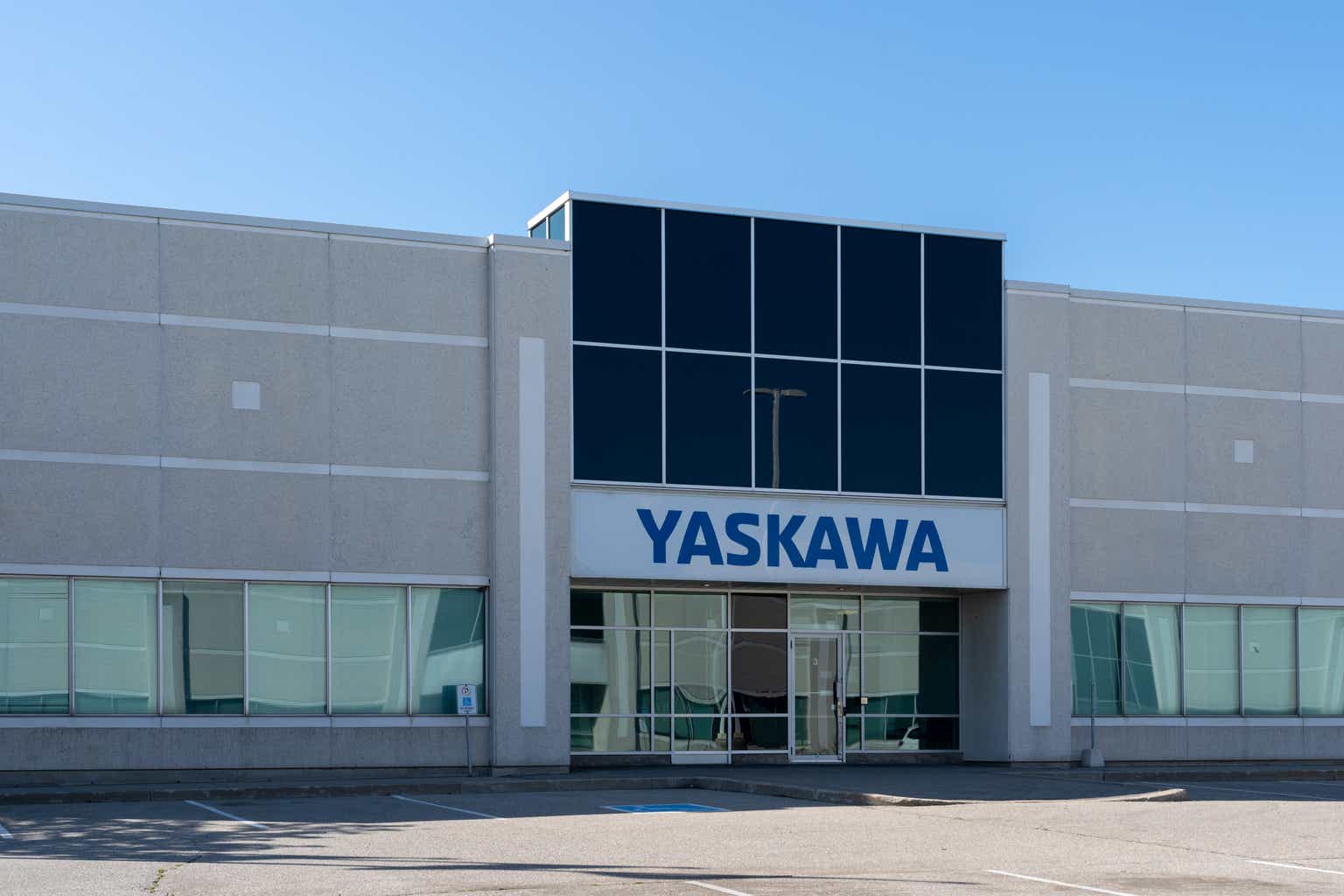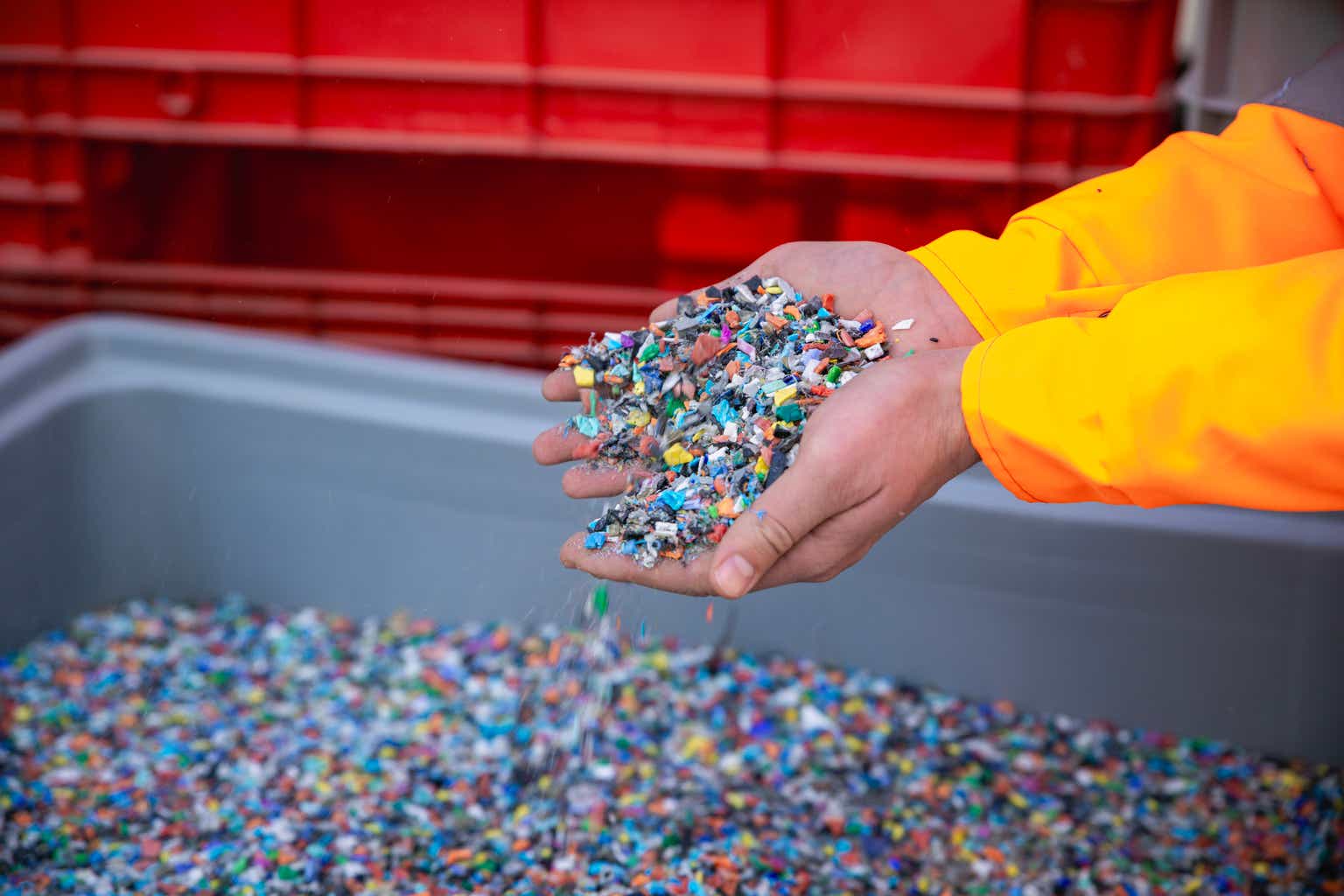JHVEPhoto/iStock Editorial via Getty Images
Yaskawa Electric (OTCPK:YASKY) (OTCPK:YASKF) is one of those well-run companies with good positioning in markets I like for the long term (automation and electrification in particular) that nevertheless often trades at too high of a multiple for me to truly love as a stock. Since my last update on the company the shares are down over 20% in U.S. dollars (closer to flat locally), underperforming many of its automation and electrification peers.
I would describe Yaskawa’s near-term outlook as “clouded”. While semi capex spending has likely bottomed, I have concerns about the health of China’s economy (a major customer for Yaskawa’s products) and EV capex investment trends. What’s more, I’m still not convinced that Yaskawa has done enough to gain share outside of its core strengths and really challenge companies like ABB (OTCPK:ABBNY), Emerson (EMR), Rockwell (ROK), and Siemens (OTCPK:SIEGY) in broader automation market opportunities.
At today’s price, Yaskawa doesn’t really look like a compelling investment opportunity. The shares have already seen a significant drop from their highs earlier this year on disappointing fiscal Q1 results, but I’d need to see another 10% or so before getting really intrigued about the opportunity here.
A Quick Look Back
Yaskawa’s fiscal first quarters gave a little something to both bulls and bears, but on balance it wasn’t the quarter that investors wanted, and the shares have been quite weak since, a situation not helped either by growing concerns about the health of the Chinese economy.
Revenue rose more than 18% as reported, with 25% growth in Motion Control driven by exceptional strength in inverters, but weaker results (barely any growth) in the AC servo business. Robotics revenue was up more than 18%.
Gross margin improved by two points (to 35.7%), helped by increasing component availability (especially semiconductors) and product/sales mix. Operating income rose 18% as reported, coming in just a bit below sell-side expectations, with reported margin down slightly to 11.5%. Adjusting for non-repeating items, operating income was up closer to 46%, with a roughly three-point improvement in profitability.
By segment, Motion Control earnings rose 44%, with margin up about two points to 14.2%. Robotics earnings rose 86%, with margin improving more than four points to 11.7%
Although management reiterated guidance for the full year (full year operating earnings are expected to improve about 2%), orders soured sentiment. Reported orders rose 8% sequentially but fell 18% from the prior year, with AC servo orders down 37% yoy. Inverter orders declined 18% and robotics orders were down 10%.
Semis Bottoming, But EV Demand Is Looking Softer
One of the biggest drivers of weakness in Yaskawa’s orders, particularly on the servo side, has been the ongoing weakness in semi capital equipment. I’ve written about this many times in reference to other companies (chip companies typically), but lead times blew out to all-time highs as companies scrambled to meet post-pandemic demand, and we’re now seeing the inevitable “adjustment phase” of the cycle.
Yaskawa has an exceptionally strong business in servos for the semiconductor industry, well ahead of companies like Rockwell and Siemens, and holds close to a third of China’s market. While I believe this is a very attractive market for the long term given the electrification and digitalization of so many products and industries, it could still take some time for orders to regain strength as companies continue to digest order cancellations/deferrals and reassess their capacity needs.
On a more positive note, Yaskawa did get a meaningful boost to its AC servo business from demand from China’s solar market. Management noted that several of its large customers are seeing healthy demand, and I’d also note that the company has invested in expanding their product line-up in recent years (increasing share of wallet with customers). I like the long-term outlook for solar, but I’m cautious about assuming that this quarter’s strength will continue at this pace.
Turning to the inverter business, demand from areas like commercial HVAC and oil/gas (especially in the U.S.) has remained healthy, but I do have concerns about weakness from industrial customers and weakness tied to the commercial and residential markets in China in the near term.
Robotics is likewise pretty murky. Although demand outside of China has remained healthy, Yaskawa does considerable business in China (more than a third of the business) and particularly in the EV space. There are attractive long-term opportunities to gain share of wallet in EV auto assembly over time (compared to traditional ICE vehicles, EV production is using robots at more stages of assembly), but it sounds as though many customers have made the capex investments they think they need to drive anticipated production through 2025.
It remains to be seen whether Yaskawa can offset that potential pause in demand from China with better demand elsewhere. Yaskawa’s positioning relative to ABB and Fanuc (OTCPK:FANUY) with automakers outside of China hasn’t always been so strong, though the company has been making efforts here. I’m more concerned, though, about the company’s relative weakness in areas like logistics, food/bev, general manufacturing, and life sciences, as these are areas likely to drive growth in robotics demand across the next decade (given how under-penetrated they are compared to autos and semiconductors). Still, on a positive note, robotics is another area where Yaskawa should benefit from an eventual improvement in semi capex and long-term expansion of production capacity – though likely not so much in 2023.
The Outlook
With China’s economy teetering, it’s harder for me to have as much confidence in the near-term outlook for Yaskawa. I can’t say it would be altogether surprising if the next quarter saw another disappointing order print and a reduction in guidance for the remainder of the fiscal year on the basis of weaker demand in China.
Longer term, though, even with my concerns about Yaskawa’s ability to reposition their technology into new growth markets (markets where incumbents like ABB, Rockwell, and Siemens are already strong), I’m not really that worried about the growth outlook.
I do see some risk that this fiscal year ends up down relative to the prior year, but I’m looking for better than 6% compound growth from FY’23 to FY’27 and long-term revenue growth in excess of 5%. I also expect improved free cash flow margins; improving scale in the robotics business should boost operating margins and I believe the company will see better FCF efficiency on the other side of a three-year JPY 150B capex program. Long term, I do believe double-digit FCF margins are possible, though that’s a bullish expectation relative to past performance.
Unfortunately, there really aren’t many approaches by which Yaskawa shares look cheap. On discounted cash flow the shares look priced for a mid-single-digit return, which isn’t bad for a high-quality industrial, but it isn’t exactly compelling either. Likewise, margin/return-driven EV/EBITDA and ROE-driven P/B don’t suggest significant undervaluation and the best I can do is to say that the shares have traded at higher multiples in the past, though usually that accompanies better order momentum.
The Bottom Line
Were the shares to fall another 10% (or more), I’d certainly revisit this name. As is, at today’s price, I don’t see a compelling enough valuation to take on the risk of greater-than-expected weakness in China nor a weaker overall global economy. I like Yaskawa as a business and I think the long-term outlook is positive, but I just don’t see that comfortable margin of safety I want with investments, and I’d rather risk missing out than overpay.
Editor’s Note: This article discusses one or more securities that do not trade on a major U.S. exchange. Please be aware of the risks associated with these stocks.
Credit: Source link



































